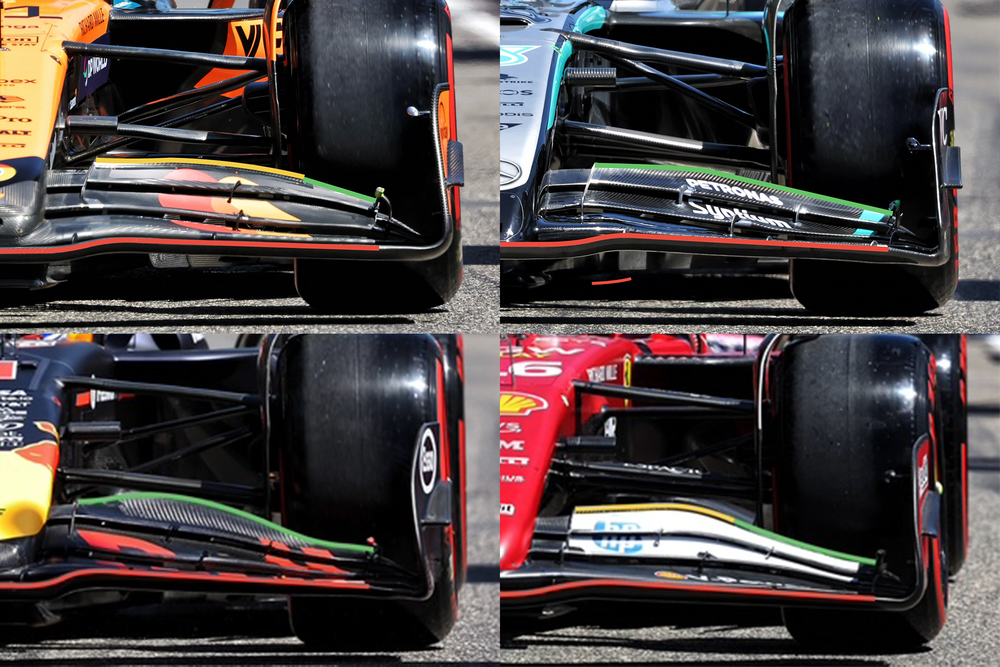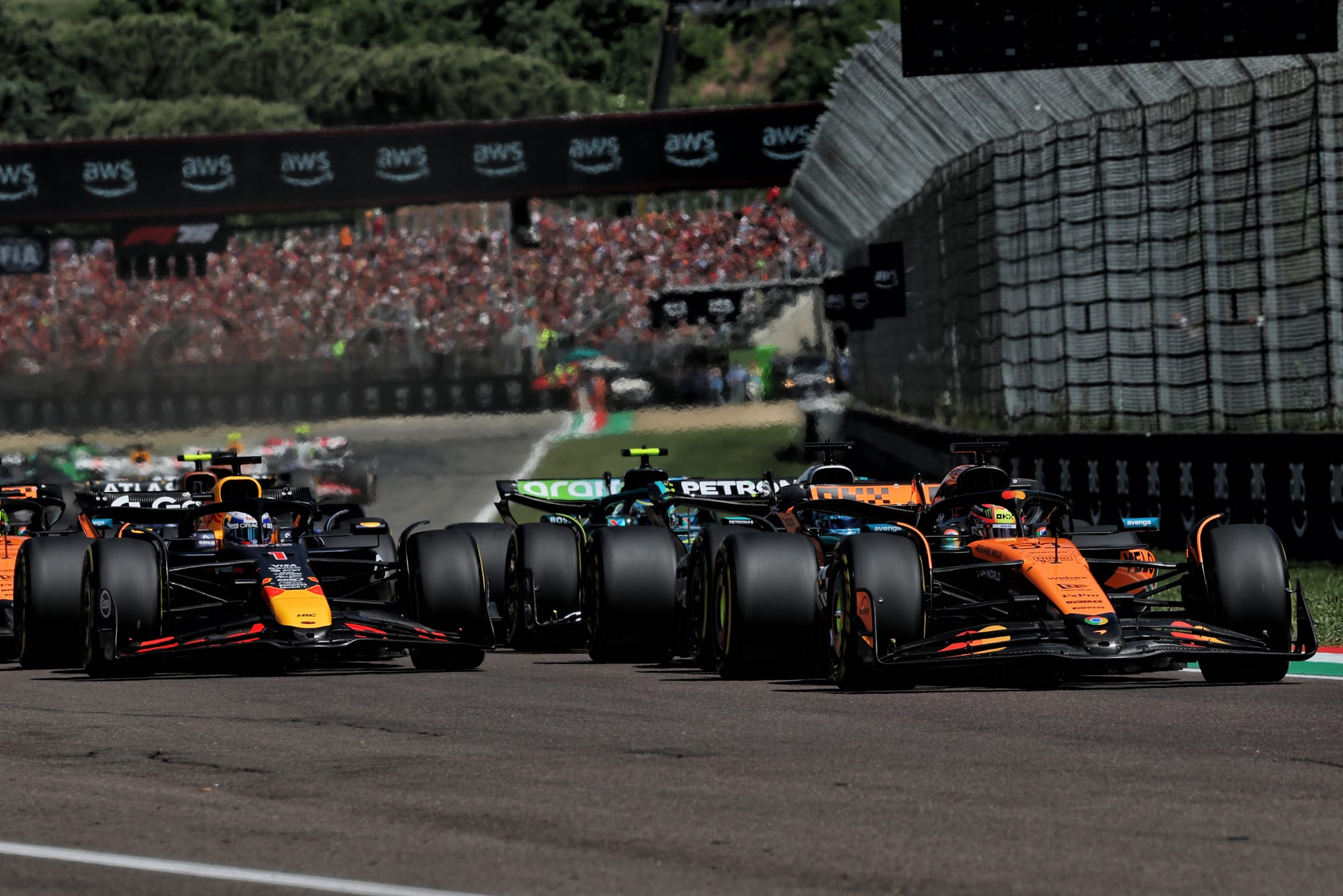How many Formula 1 teams will head to Barcelona for the Spanish Grand Prix on a 'wing' and a prayer?
The reduction in the amount of flexibility permitted in the FIA's front wing tests kicks in and will undoubtedly hurt some teams more than others. The question is, who could lose out and who might gain?
The rationale for the value of pursuing, and in some cases maximising, front wing flexing is clear. When the wing is in its starting position, it generates more front grip at lower speeds. That's important because these long, heavy cars commonly understeer more than the drivers want. But as the wing angle backs off at higher speed, then the centre of pressure (CoP) moves rearward, giving more stability in fast corners.
Why not use more front wing angle to reduce the understeer, I hear you ask? Yes, that would help in slow- and medium-speed corners, but would also end up pitching you into the barrier at high speed. Running less front wing increases the understeer in slow- and medium-speed turns, but gives you a more stable car in the high speed. Both of these will, at a minimum, sap laptime, if not throw you at the wall.
In general, this low speed to high speed balance problem is exaggerated with the weight of these current cars, but for some teams it is also self-inflicted. These ground effect cars increase the underfloor downforce dramatically as they get closer to the ground so, if you have the CoP of the underfloor itself just that bit further forward than another team, then as that downforce increases it has more effect on the front of the car than on the rear of the car. This makes the car nervous in fast corners. When I say "just that little bit", I'm talking perhaps 5-10cm further forward.
This article was published first on The Race Members' Club. To get early access to more of Gary's opinions, ad-free and bonus podcast episodes featuring our ex-F1 technical director and much more, head to Patreon and sign up any time in May to get 75% off your first month
So the quantity of front wing flex that each team needs to generate to create a more stable aerodynamic balance between low and high speed will vary. Therefore this change will affect some teams more than others.
To get an idea of where each team stands, I have taken a close look at their front wing packages from the last conventional track, Imola. The more load you produce from the front wing, the further rearward the CoP of the underfloor will be. The further outboard you load the wing, then the more rotational flex you will get.
Here's how the front wing flexibility test works, using an Aston Martin front wing to demonstrate it. The test is about the amount a front wing that sweeps rearward as it goes outboard bends.
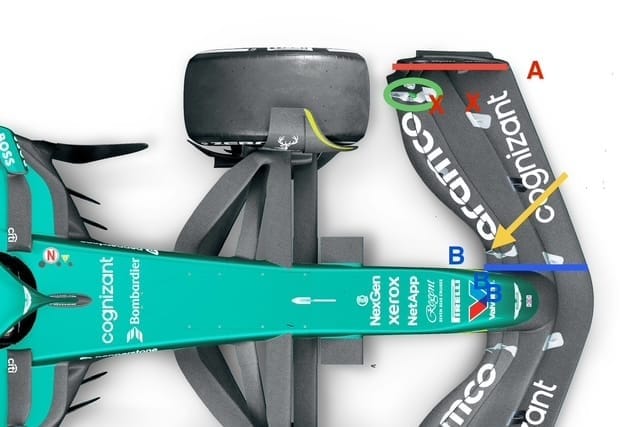
Its outer chord section (A) is behind its inner chord section (B). The load for the deflection test can be carried out on either of the positions marked X.
The wing angle adjuster highlighted with the green ellipse is in close proximity to those outboard load test positions. This means that all four wing elements help to distribute the load.
With this style of delta wing design which is defined in the regulations, you should be able to play tunes on the amount of flexing using the carbonfibre weave and the carbon unidirectional material orientation in the front two elements. It is those two elements that must withstand the bending or torsional loads generated from this test.
The woven material, which is simply, as it says, woven, is what we normally see as an outer skin. It will withstand loads in all directions and protect the main structure from stone damage.
The unidirectional material, or UD as it's more commonly called, withstands huge tension loads, so when placed in the correct orientation to react to the loads created by the test the quantity of UD will increase or reduce the deflection.
To show what I mean about using UD, I have illustrated what I would call a simple layup: red lines on the second element, black lines on the most forward element. This material in tension is very stiff and you could play tunes on the overall wing stiffness by altering the direction, quantity and to some extent the quality of the material used. Then you simply cover it all to tie it together and protect it from stone damage with the woven carbon.
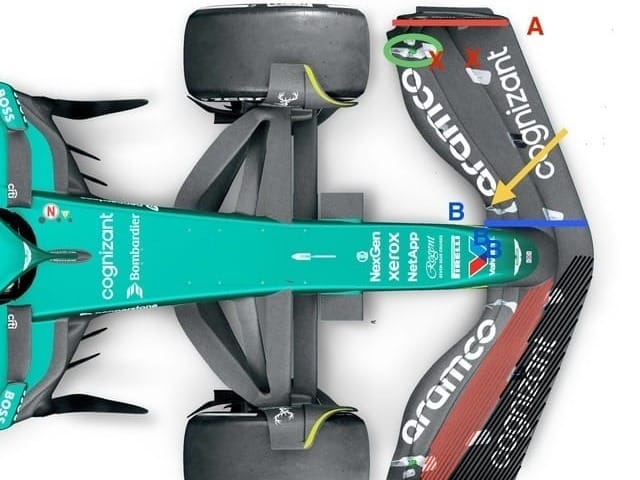
The yellow arrow highlights the area where we the viewers see the wing deflection taking place. The inner part is rigidly attached to the nose, while the two rear flaps outboard of that yellow arrow are only supported by the adjuster inside the green ellipse.
Now, let’s take a close look at the front wings of the top four championship contenders to understand how this technical directive may or may not impact them.
McLaren
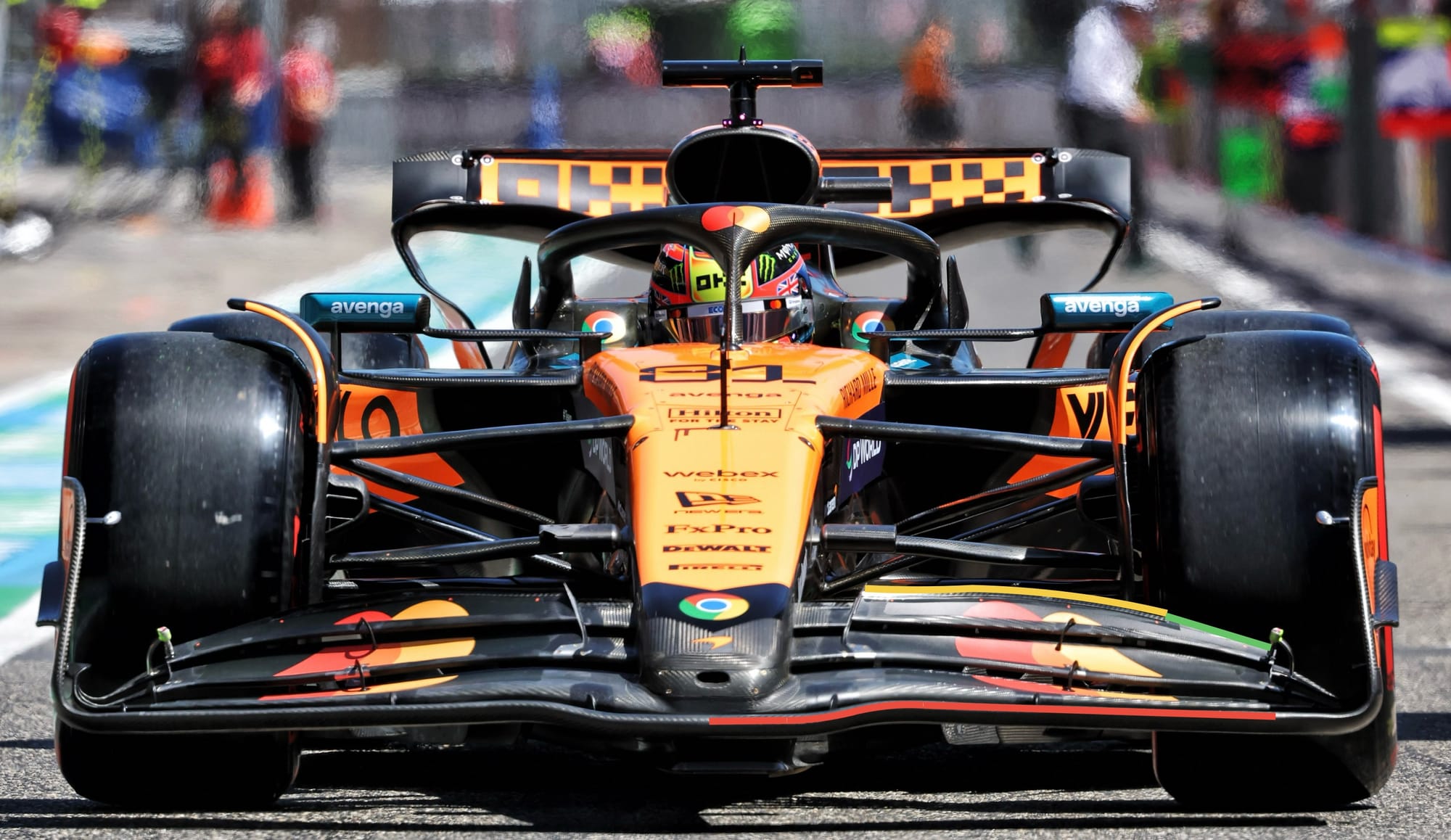
Based on what we can see, McLaren runs as much if not more front wing frontal area than any other team. This likely means that the CoP of the underfloor is further rearward than others, which should give it a more consistent aerodynamic balance across the corner speed range.
It also means a small reduction in wing angle across the area that I have highlighted with the yellow and green lines. This will give a greater CoP shift rearward, so not only is the car more inherently aerodynamically stable, but McLaren will also get a bigger benefit from less deflection.
The yellow line shows the area on the rear flap where McLaren is running a Gurney flap. A Gurney flap generates more low-speed grip than you would achieve by just adding front wing angle. The green line just in front of the tyre is the area where McLaren is not using a Gurney flap.
The red line is the stagnation point where the airflow will separate. The airflow below it will travel underneath the wing, the airflow above it will travel over the top of the wing - with some of that flow that is going over the top being pulled through the slot gaps between the elements at very high speed. These will be positioned along the chord of the wing where the flow is getting a bit lazy to reduce the risk of the airflow traveling underneath suffering from separation problems.
All that, together with the high levels of anti-dive and anti-lift to control the rake of the car under braking and having the CoP of the underfloor further rearward, will still be beneficial.
I don't foresee any major design changes required and if McLaren does need to stiffen the front wing, it will be a minor change compared to some others.
Mercedes
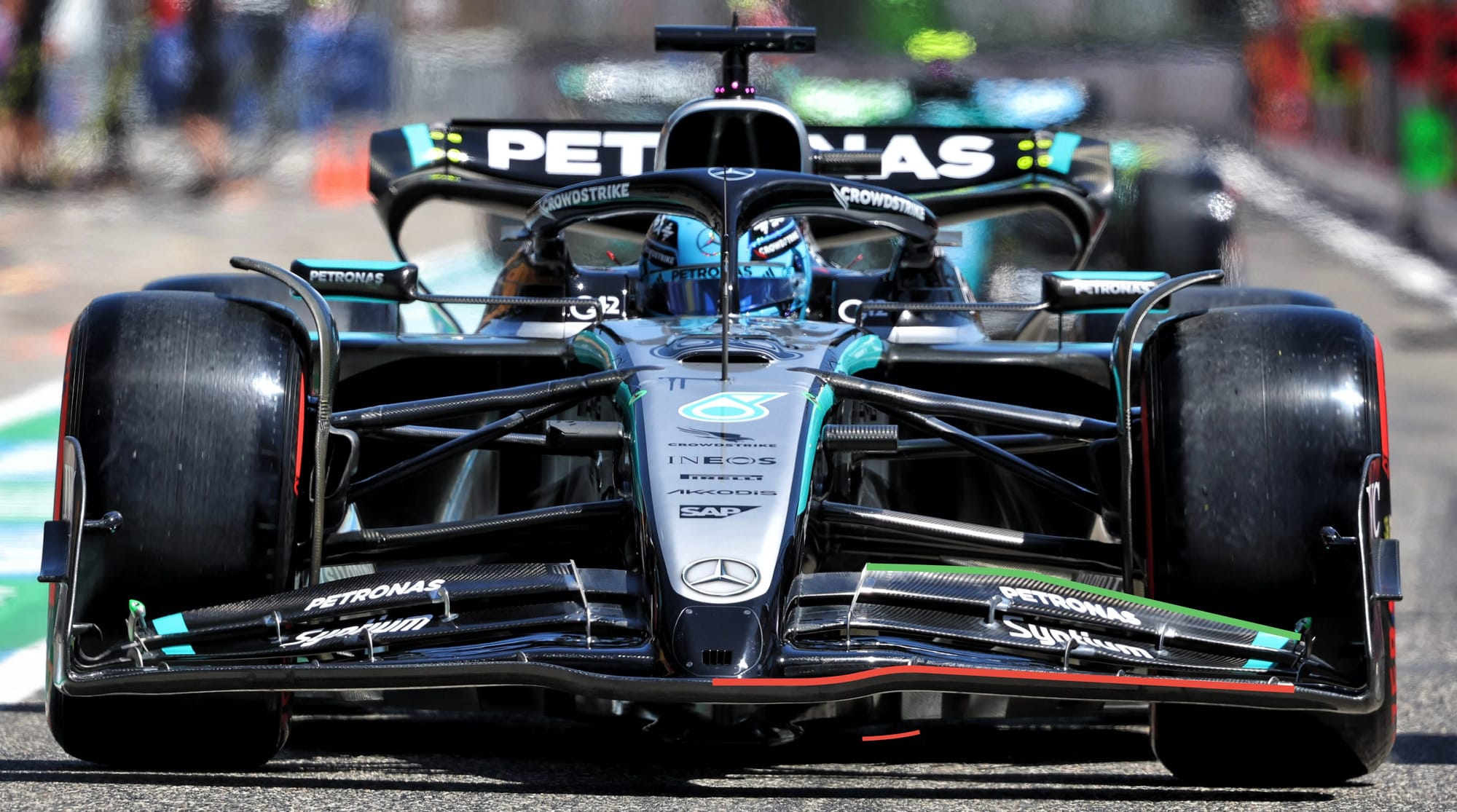
In recent races, Mercedes has converted to using the nose version that attaches directly to the most forward front wing element. I'm not a big fan of this, as when that lower central section of front wing gets closer to the ground under braking it will interfere with the airflow to the central section of the leading edge of the underfloor. This means it will have a negative effect on underfloor consistency.
Also, the green line indicates that they are not running a Gurney flap on the trailing edge of the rearmost flap. This indicates Mercedes is not fighting to get front downforce - and suggests that its underfloor CoP is further forward than on the McLaren.
Again, I don't really see that Mercedes will have much to change to comply with the revised wing deflection tests. That said, if it does have to stiffen the wing just to comply with the new numbers then I suspect it will have more of an effect on it than some others.
The reason I say that is because if, as I suspect, Mercedes does have the CoP of the underfloor further forward than McLaren, then stiffening the front wing will simply mean the CoP of the complete car will also be further forward and that will make the car more nervous in fast corners. If the front wing angle is simply reduced to improve the balance in fast corners it will induce more understeer in the slow corners.
Red Bull
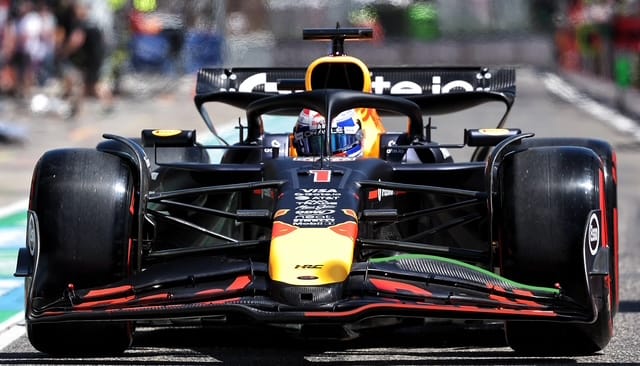
Red Bull has more shape to the trailing edge of the rearmost flap than McLaren. The green line shows this, and the fact that Red Bull is not using a Gurney flap also means like Mercedes it is not struggling for front downforce. Also, the front wing shape drops off faster going outboard.
This will mean for the same angular deflection (wing angle backing off) it will have more CoP shift rearwards because it's producing more of its front downforce from that increased chord length halfway between the inner edge of the tyre and the side of the chassis.
The central section, where the most forward element started the season connected to the underside of the nose, is now detached. The change of height to the lower section of the mainplane in this area is a little aggressive for my liking and that increased chord length I mentioned above could very easily encourage crossflow, which can have a major effect on the airflow to the central section of the underfloor.
However, to counter that this does give Red Bull a slot gap between the nose and most forward wing element, which improves the mass flow to the leading edge of the underfloor when the front wing is close to the track surface under braking.
If you keep chasing higher levels of downforce from the underfloor, which I believe Red Bull has been doing, the temptation is to move the CoP of the underfloor forward. This means you have a longer distance of low pressure between the throat of the underfloor and the trailing edge of the diffuser.
I don't think this change in front wing deflection will do Red Bull any favours. It might just make the car a bit harder to get balanced.
Ferrari

The yellow line indicates the area where Ferrari runs a Gurney flap. The green line outboard is without a Gurney flap, making it very similar in this area to McLaren.
The red highlight line is the stagnation point on the front mainplane, the intersection to the lowest point is more sympathetic so less chance of transverse airflow. All in all, it's a tidy wing package and the fact it runs a Gurney on the trailing edge shows Ferrari is still searching for front downforce, especially in slow corners.
I’m pretty sure Ferrari's problems lie in the underfloor. At Monaco, it was in a pretty good place but Monaco is the one track where everyone needs to run a slightly higher ride height. This takes away any peaky underfloor downforce, so I would expect its problems to return at Barcelona.
To get a decent performance from the overall car at a more conventional circuit, Ferrari seems to need to run the car lower, so it appears to be very ride-height critical. If so, Ferrari might just suffer a little more in the high-speed corners than most if it has to run a stiffer front wing.
Conclusion
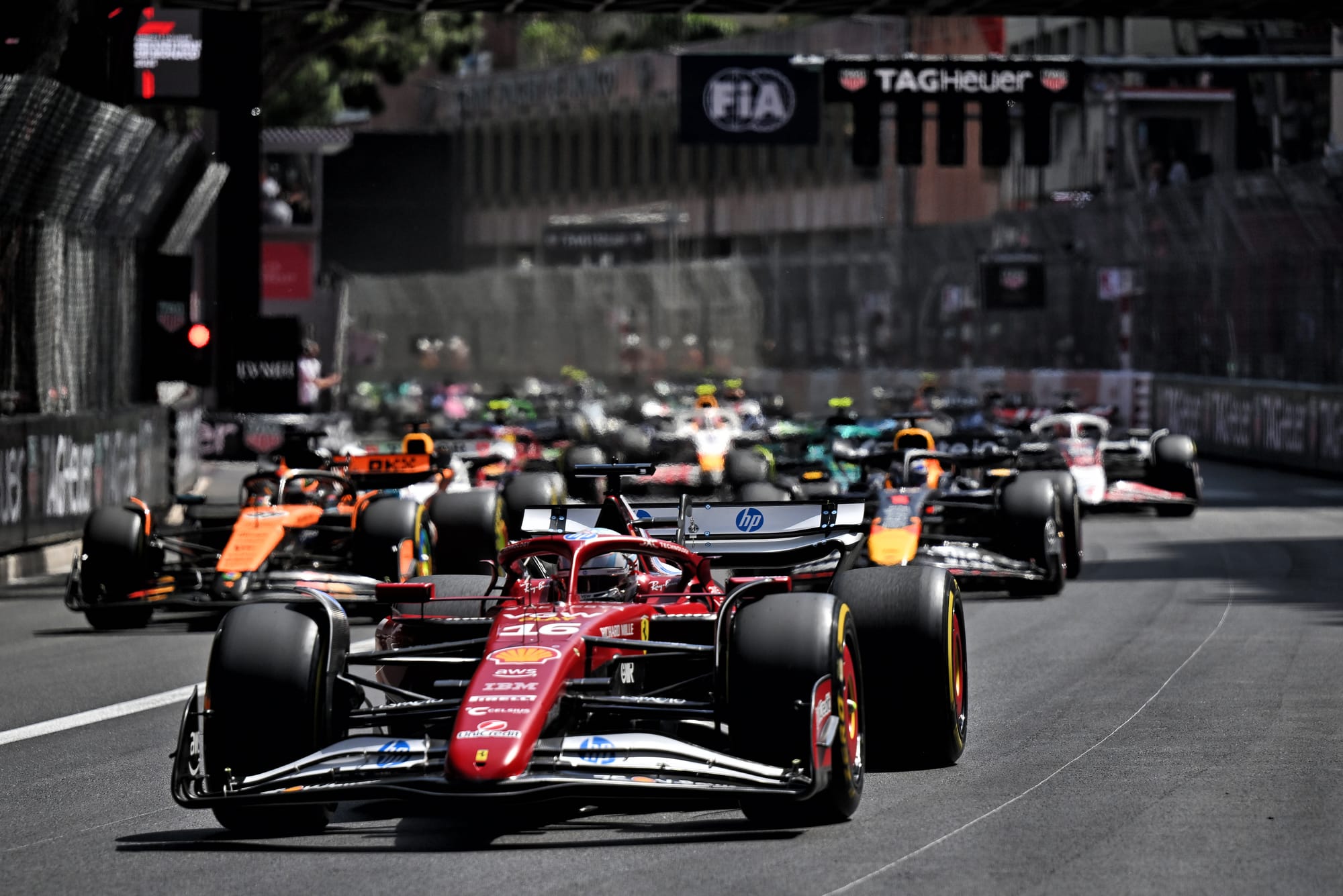
I suspect any changes that the teams have had to implement for Barcelona will have been run at Imola - that is despite several teams saying they will again have changes for Barcelona.
No team would just head to a track with a major change (if they had to) without getting some idea of what effect it might have on the car performance. Is that why Mercedes and Ferrari look like they were struggling just that little bit more at Imola?
The other thing is that sometimes it is very easy to trick yourself, as having a flexing front wing is fine only as long as it flexes on track correctly and you understand it. Sometimes, these sorts of things just confuse teams when you are chasing the set-up, so that could actually help any team that needs to stiffen its front wing.
Whatever happens, the Spanish GP weekend will be one to watch to see how each team's performance compares to the past eight events.


